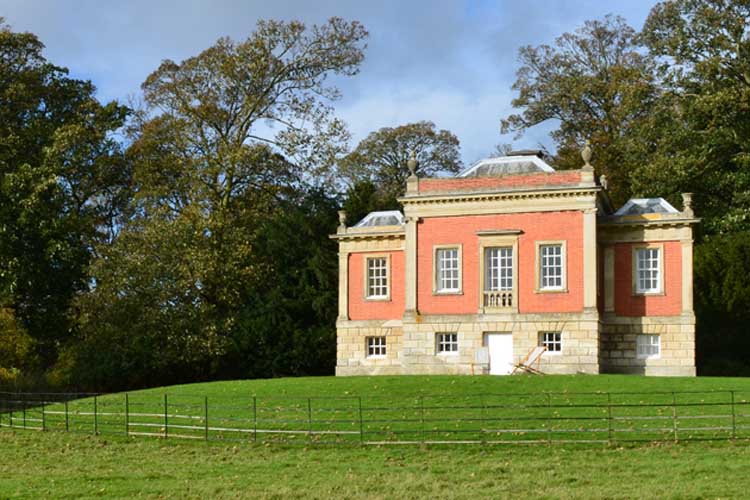The Landmark Trust is an organisation that owns historic properties that are available to people to rent and stay in.
“The Landmark Trust is a buildings preservation charity, which sounds a bit dry until you realise the clever bit, that anyone can spend a few days living in exceptional, beautifully restored buildings and, by doing so, guarantee their future,” explains Ed Percival, the organisation’s Head of Marketing and Communications.
“Many of our buildings are in outstanding locations. Often the buildings have fallen out of use or there isn’t an obvious use for them. They are rich, interesting and comfortable…and offer great places to explore. Initially, our founder, Sir John Smith, would buy buildings. We still own the vast majority of them. We also have a mixture of very long leases and manage a handful on behalf of the owners. Increasingly we are being bequeathed buildings,” he says, estimating that the nation has 10,000 ‘at risk’ historic buildings.
From cottages to an island
“We’ve got everything from cottages to castles, follies and forts, and an island…there’s even one in the shape of a pineapple,” he answers, when I ask about the 194 property portfolio. Most are on the United Kingdom’s mainland but some, including the Duke and Duchess of Windsor’s former weekend retreat, are in France and six in Italy.
So how do people find out more about the properties? “The website is a good starting point, with lots of thoroughly researched material written by our in-house historian,” suggests Ed. “When you stay in a landmark, each one has a detailed history album and a library of books related to the building, its area and its previous residents. There’s an iPad app and a sumptuous 300-page handbook which you can order via our website.”
Ed explains that you don’t need to be a member of the organisation to make a booking and that some people return again and again: “We’ve got people who have stayed in 150 or more. As they get to love the buildings they often choose to support us through becoming regular donors. We also have a friends’ scheme which enables single people and couples to join larger house parties, in some of the biggest buildings, which might otherwise be outside their reach.”
Bookings are currently open until the end of 2015 and the biggest buildings tend to be booked quite far in advance. Ed suggests booking now for Christmas and the turn of the year: “You can secure a booking with a 10 per cent deposit. Some buildings are already booked solidly until the end of 2015, such as Astley Castle which won the RIBA Stirling Prize for Architecture in 2013. However, it’s always worth checking our late availability, as there’s always something.”
So what are Ed’s personal favourites? “I’ve visited 70 of our buildings so far and haven’t found one I wouldn’t want to spend time in. It’s special to have the key, to lock out the outside world, and sit by the fire. It’s so restorative to disconnect from the digital world. Don’t expect TVs and Wi-Fi but everyone has a well-equipped kitchen, comfortable beds and sofas. I’ve had a great time with friends at the Grange in Ramsgate and snuggled up with my partner in the doll’s house like Chateau in Lincolnshire,” he responds enthusiastically.
So are any of the buildings are thought to be haunted? “I don’t believe in ghosts, but great buildings have great atmospheres. For those that like to seek out such things, then I’m sure they’ll find what they are looking for. I did buy a nightlight when we stayed at Laughton Place, but then I’m a townie so complete darkness is a novelty. On Lundy Island, the generators are switched off overnight and I laid on the ground and stared at the Milky Way surrounded by the ghostly sounds of Manx shearwaters,” answers Ed.
“The Landmark Trust is a very special organisation, for a long time it has been a well-kept secret, but I’m keen that more people find out about the very special places we look after,” he says as the interview draws to a close. “But not too many,” he adds jokingly, as an afterthought.
Further information
Visit the Landmark Trust website to learn more about the organisation and its properties.
Photos: Courtesy of the Landmark Trust.
If you enjoyed this post why not sign up for the free Go Eat Do newsletter? It’s a hassle-free way of getting links to posts on a monthly basis.
‘Like’ the Go Eat Do Facebook page to see more photos and content.



